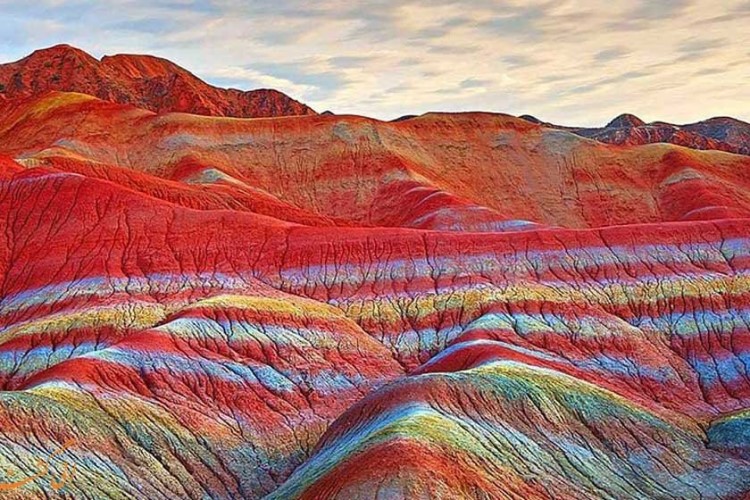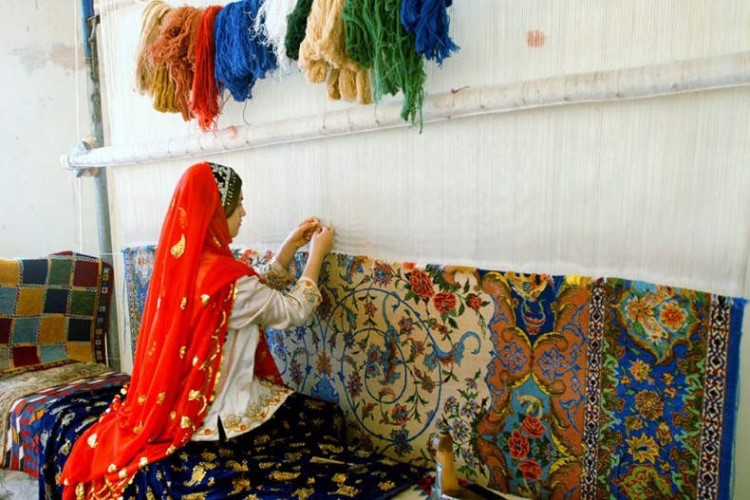
Iranian carpet is a reflection of Iranian culture, authenticity, and art. It is an original art that has been preserved alive by the art of hand weavers and Iranian culture. Persian carpet weaving is one of Iranians' oldest and most authentic art. The world's oldest carpet is considered to be an Iranian work from the Achaemenid period. Besides its authenticity and age, it is becoming increasingly popular among different nations and cultures. Its beauty of design and its role is one of the main factors for the durability of this art. By paying attention to the aesthetic points in the carpet, these artists have made the Persian carpet a unique work.
Iranians have always desired to use hand-woven carpets in their homes and have sought to add more beauty and warmth to their homes by using this unique art. There are various types of Iranian carpets, and being familiar with them can help you make the right choice when buying them. This article from Navaran Magazine would like to introduce you to Persian carpets and tell you everything you need to know about them.
History of Persian Carpet
Persian carpets are a symbol of art, brilliance, culture, and authenticity. Iranians have been among the pioneers of carpet weaving, who, over time, have developed this art with precision, creativity, and taste to a level of perfection that can be called a representative of Iranian culture and art. The earliest documented evidence of the Iranian art of carpet weaving is found in Chinese texts that refer to the Sassanids.
It is important to remember that the materials used for carpets, including wool, silk, cotton, etc., often rot over time, and this makes it difficult for archaeologists and historians to pinpoint the age of a carpet. Yet, historical evidence and documents suggest the existence of magnificent carpets at the Achaemenid royal courts. For example, Alexander the Great is believed to have been surprised and delighted when he saw the magnificent Iranian carpets in Pasargad. During the reign of the Seljuks and Ilkhanids, carpet weaving became popular as a valuable art and profitable business. We are told that the mosques of that time were all covered with a precious Persian carpet.
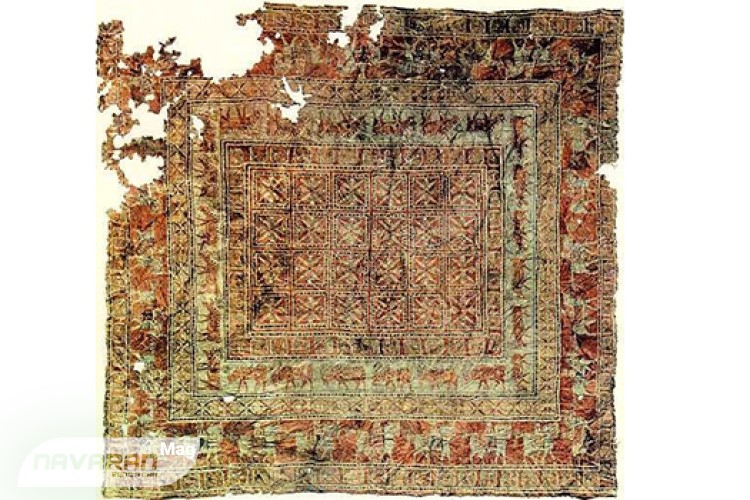
Pazyryk Carpet
The world's oldest carpet is the so-called Pazyryk carpet, which was discovered by a Russian archaeologist in 1326-1328 in the frozen tomb of a Scythian ruler and was named after the place of its discovery, the "Pazyryk Valley" in Russia. In addition to this carpet, there were other ancient objects. This carpet is made of wool and has a square shape, with each side 1.98 meters long.
The Pazyryk carpet is decorated with a floral border and pictures of horsemen, grazing deer, and mythical creatures with the head of an eagle and the body of a lion. Sergi Rudenko, the person who discovered this carpet, noted the great similarity of the motifs of this carpet with the reliefs of Persepolis after examining the structure of the carpet and its paintings. While most researchers believe that this carpet belongs to the Parthian or Medean period, different theories still exist about the actual age of the carpet. Nowadays, the Pazyryk carpet is kept in the Hermitage Museum in St. Petersburg.
Categories of Persian Carpet
Having now learned more about the history of Iranian carpets, let's talk about the different types of Iranian carpets.
Carpet
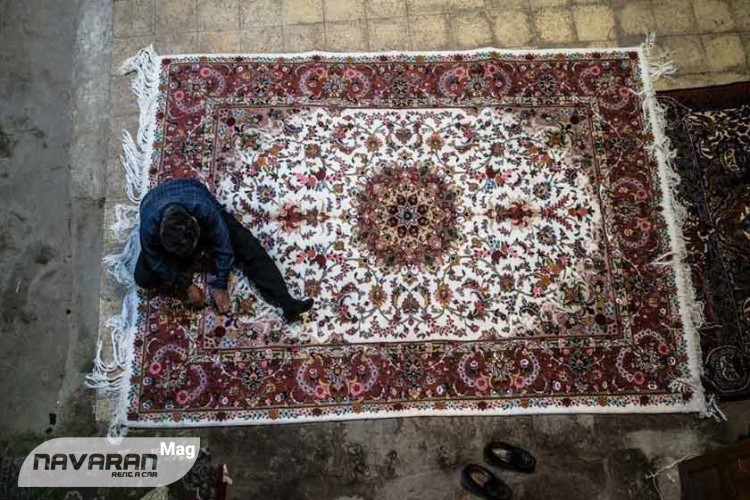
A carpet is a rug woven from cotton, wool, and sometimes silk fibers, which is usually used as a floor covering. The term is used to describe a rug that is woven and knotted by hand. Because carpets have often played a decorative role, today, there is more emphasis on their ornamental aspect. Carpets are woven in different cities in Iran due to the widespread of this art in the country, but the Tabriz carpet has always been the most famous Persian carpet. Some other cities whose carpets are famous are Kashan and Qom.
Gabbeh
Gabbeh is among the types of hand-woven Iranian carpets, which are usually thicker and rougher than other Iranian carpets. Among the features that distinguish this type of carpet from other carpet types is that natural wool yarn and natural vegetable dyes are used for the edge of the carpet. Gabbeh is the same kind of carpet, with the difference that it is made in smaller sizes and with longer piles, Gabbeh is mainly the art of nomads in different regions such as Bushehr, Shiraz, Khorasan, etc, and is regarded as one of the most important goods of these people.
Jajim

Jajim is recognized as carpets that are woven in long and short shapes. Jajim is a thin fabric that is softer than a carpet. Jajim is woven in different regions, and the people of each region give it a special name. For example, in Ilam, Jajim is called "Jol." The raw material from which Jajim is woven is wool, and its weaving is similar to that of a carpet. However, the difference between these two is that Jajim is woven into four panels, which are joined and sewn together after weaving.
Gelim
A Gelim is a type of hand-woven and lint-free carpet, which is often woven from natural wool. Geometric patterns such as diamonds, hexagons, squares, and triangles are frequently used for weaving these small Gelims, and sometimes natural and animal shapes are used on them. Regarding Persian carpet texture, Gelims can be divided into three simple categories: simple, embossed, and Verni.
Types of Persian carpet
Following this section, we would like to introduce you to the types of Iranian carpets that are knotted in different cities and regions.
Qom

Carpet weaving was initially popular among the nomads and villagers of Qom; however, it gradually spread to other parts of this province due to the importance of this industry for trade. Initially, the carpets woven in Qom started to enter the market with not very fine threads, but gradually the artists in Qom began to weave very fine and perfect carpets with their ingenuity and skill. The elegance and uniformity of the hand-woven carpets from Qom leave the viewer in doubt if they were woven by machine.
Qom carpets' common designs can be named Shah Abbasis, Toranj, Mahramat, Mehrabi, and Shekargah. Originally, the colors used in Qom carpets were restricted to four to six colors. Still, with time, the range of colors increased, and today more than 40 different colors are used in the carpets of this region. Some of the most popular hand-woven Iranian rugs come from the cities of Tabriz, Kashan, and Qom, and through the years, Qom was able to establish its place in the country in the hand-woven carpet industry.
Tabriz
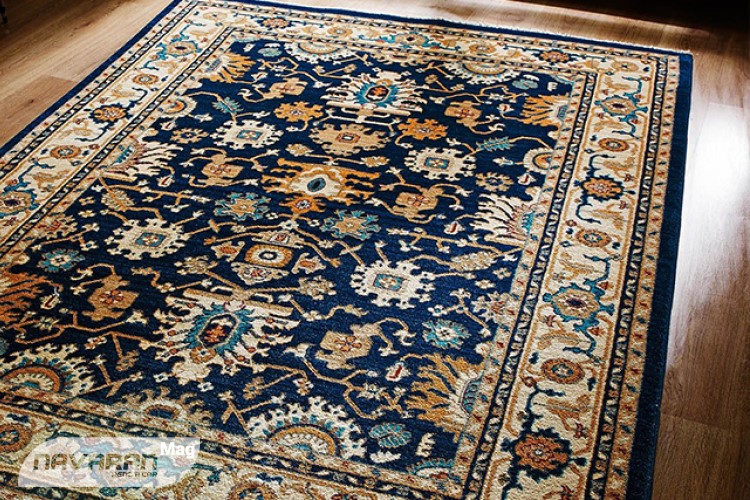
The hand-woven carpet of Tabriz can be described as one of the most attractive and famous hand-woven carpets in Iran, being very popular all over the world. Few people who are in the field of carpet weaving have not heard of the name Tabriz city. Indeed, the main feature of Tabriz carpets is the great variety of colors, making the carpets from this region of Iran the best-selling and most expensive carpets, which, besides their quality, are also of extraordinary beauty.
Hand-woven rugs from Tabriz, like any other hand-woven Persian rug, use cotton, wool, and silk as raw materials and fibers, which are naturally used especially. However, as you may know, a hand-knotted carpet has three main dimensions: Warp or equal length, weft or equal width, and pile or equal height. More often than not, cotton fibers are used for the warp of Tabriz carpets, which have very high resistance and strength.
The use of wool for the weft and pile of carpets is quite common in this region. The wool used in Tabriz carpets possesses a special and unique characteristic, which is its roughness. And the final option is silk. One can say that the silk carpets of this region are some of the best examples of Iran and the world, which are preserved in many museums of the world.
Tabriz carpets come in all sizes and dimensions compared to hand-woven carpets in other regions and cities. However, we can say that the main feature is less found in carpets of other regions: The texture of the finely woven silk carpets of Tabriz is great, and many of them are world-famous and are kept in museums of other countries. For Tabriz carpet weavers, trying to use new colors and patterns in their carpets is a definite feature, which is why the color materials of western countries have entered the carpets of this region and new colors have replaced the old colors.
Bijar
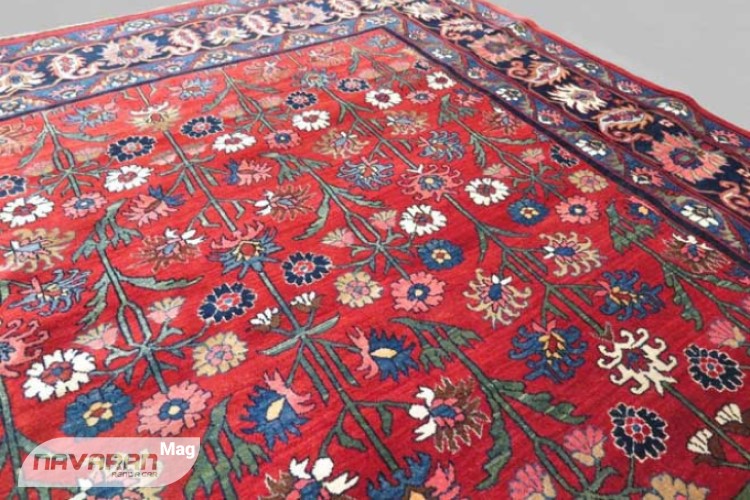
Bijar hand-woven carpet is regarded as one of the most original and best carpets in the western parts of Iran, which even has a world reputation. When looking for a strong carpet with a thick and strong texture, the Bijar carpet is one of the best types of Persian carpet. Boasting a worldwide reputation, Bijar carpets have been titled "Iron Carpet". This is because of the hard and dense texture of this carpet.
Bijar carpets have long and dense knots and are therefore classified as rural carpets. Moreover, the knot of Bijar rugs are of Turkish type and the knot is the downward knot on the right side of the rug; furthermore, it is woven in various towns and villages of the region in the form of loops, half-loops and flat. Providing high strength to the Bijar carpet is the type of weft thread used for it. In all hand-woven carpets, the weft thread, which is a horizontal thread, is used with thin fibers, but in Bijar carpets, not only one thick wool weft is used, but several thin wefts are used simultaneously.
Turkmen
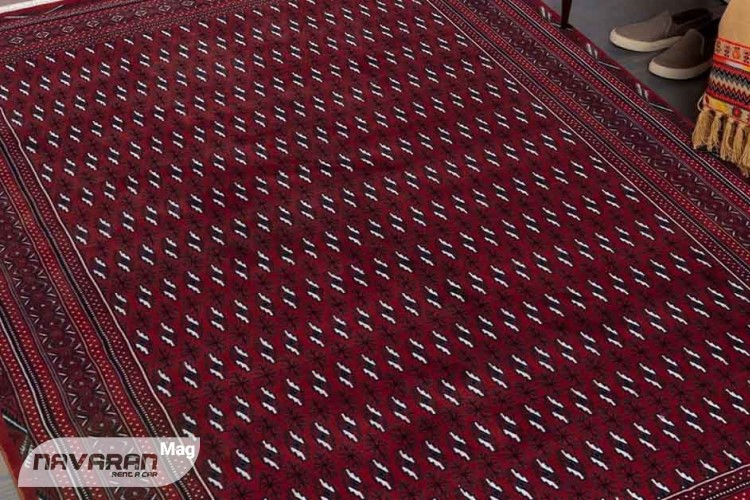
Without a doubt, Turkmen's hand-woven carpet may be introduced as one of the oldest and most genuine examples of hand-woven carpets in Iran, having special features. Carpets of a city can inform about the life of local people in that region, showing the importance and interconnection of carpet weaving with the culture of those people, something that is evident in the case of the Turkmen carpet.
Turkish knots are primarily used in the making of hand-woven Turkmen carpets. According to research, a group of Turkmen clans who moved to Iran following the Russian Revolution, in the past wove the best Turkmen carpets with the Turkish knot in the form of two tufts. Because the weather conditions in the mountainous areas of this region are rather cold, for a long time the rugs of this region have been completely beefy and fluffy. As a result, the carpet will get warmer.
Turkmen hand-woven carpet color is considered to be one of the special features of this carpet. Using the red color in Turkmen rugs is extremely important. Besides the red color (lacquer), white, black, and dark green colors have also been used frequently.
Isfahan
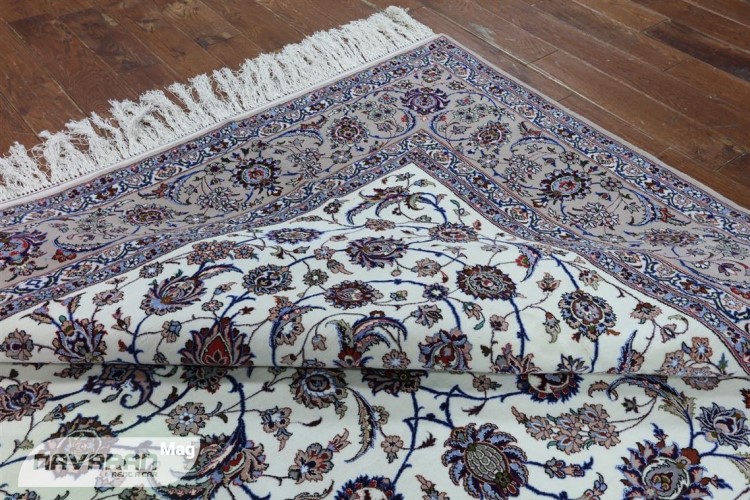
As the capital of Isfahan province, Isfahan is considered to be one of the most significant cities in Iran. Nowadays, whenever we want to choose just one city that managed to preserve the artistic features of the past in Persian carpet design to a certain extent, Isfahan is the first choice out of the carpet weaving hubs of Iran. Throughout the Safavid era, owing to the interest of the Safavid kings in carpet weaving art, the most excellent silk carpets were woven by Isfahan artists.
Most of the Isfahan carpet designs' major pattern follows the Lachak and Toranj pattern, and the beautiful Eslimi motifs and their rotations are present in the Lachak and Toranj structure and the carpet text, covering the carpet texture with their beautiful free movements, and the Eslimi motifs and frames are beautifully there in the sides of the carpets. Some of the other characteristics of Isfahan carpets are the spread of Khatayi stems as the background with Eslimi stems along with the beautiful flowers of Shah Abbasi.
As a general rule, the colors in Isfahan carpets are up to 15 colors, which include the use of cheerful colors with a focus on the traditional colors of Iranian carpets such as lacquer, blue, cream, beige, khaki, and navy with dark and light degrees. Indeed, this is standard practice in the carpets of this city. Avoiding light shades (except for some new carpets) is yet another characteristic of carpets from Isfahan.
Bakhtiari
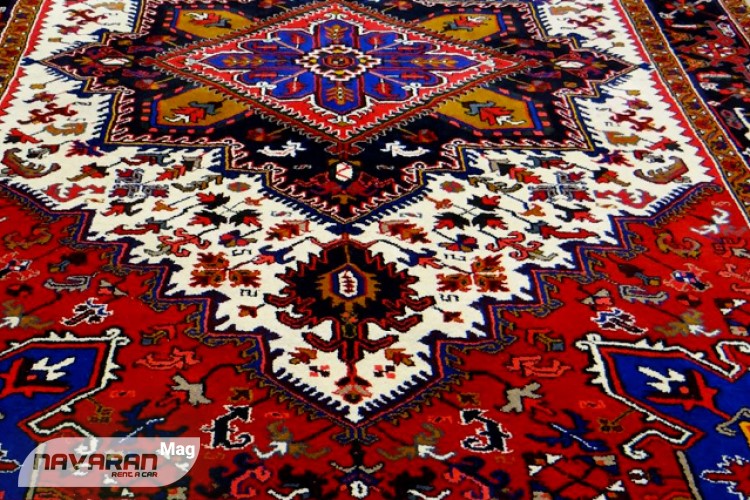
Bakhtiari's hand-woven rug is a definite example of Iran's proud art. Upon hearing its name and that of the Bakhtiari clan, we Iranians unknowingly feel a sense of pride and originality. Let's discuss the originality that is woven through the art of the eager girls and women of Chaharmahal province. Do not forget that the designs, colors, and patterns which are used in these carpets are just a tiny depiction of the art of the people of this region, and sometimes putting a price on these works is difficult.
If we talk about the Persian carpet pattern and designs of Bakhtiari hand-woven carpets, the most obvious feature that can be discussed is the presence of a variety of colors and models. Using cotton threads and wool wefts in Bakhtiari rugs has resulted in the very light weight of the products from this region when compared to other hand-woven rugs, making it a viable option when choosing used hand-woven rugs in terms of quality. Furthermore, using diamond and square patterns, in which animal and plant motifs appear, has brought originality and special charm to the woven carpets of this region.
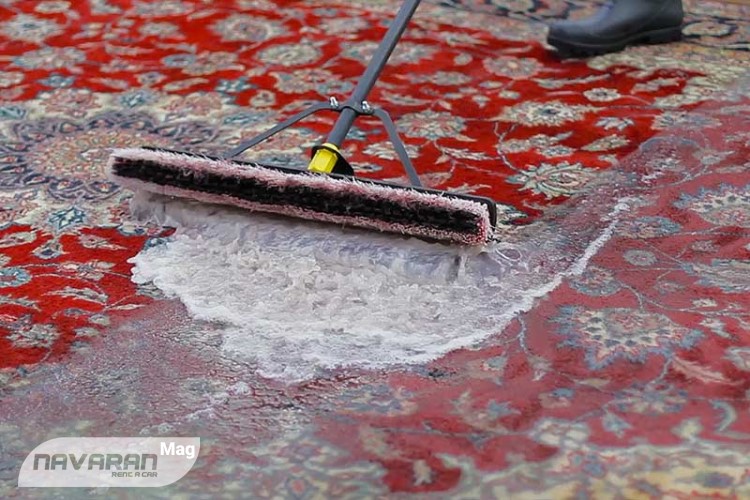
How to properly maintain Persian Carpet?
Hand-woven Persian carpets are works of art with expensive materials. When used properly and given the proper care, such carpets are highly durable and become an everlasting asset. Many of us have hand-woven carpets in our homes from times long gone, and if neglected, they can become damaged. In the following, we will give you some tips on how to take care of Persian carpets.
- Do not expose the carpet to direct sunlight. Regardless of how high quality and original the raw materials of the carpet are, they will lose their resistance to natural factors such as direct sunlight, wind, and water.
- Do not always lay the carpets in the same direction; as they are exposed to wear and tear.
- Do sweep the carpets in the direction in which they lie down.
- Avoid folding the rugs to move them, as this increases the risk of the rug tearing; roll the rug instead.
- When sweeping the carpet, it is better to also remove the possible dust underneath. The House floor usually has alkaline properties (due to possibly contained lime). As a result, if the carpet is in constant contact with it, then it will start to rot.
- Be careful of moisture penetration into the handmade carpet. Hand-woven rugs are made of natural fibers such as wool, fluff, and merino; therefore, they can absorb moisture and rot. So, you are better off laying out your rug in a room where no moisture can get into it.
Iranian carpet price
A carpet's price depends on many factors, a few of which we will mention in the following paragraphs. A typical hand-woven Persian carpet is one of the oldest and most authentic carpets and has a higher value. One often has to spend more money on hand-woven rugs.
In addition, the raw materials for weaving carpets are wool, silk, and cotton, which can also be made in a combination of these materials. The Persian carpet price can be different based on what materials it has been woven with. For example, the silk Persian carpet is among the world's most expensive carpets.
Any slight color and shade differences in parts of the carpet represent one of the factors that can reduce the value and price of hand-woven carpets. The broken carpet flower or the wrong side of the carpet flower designs largely determines the price of the Persian carpet. To properly find such imperfections in a Persian carpet, a lot of experience and expertise are required. Some people consider the design and pattern of the carpet as an important factor in determining the price; in other words, the more complex the design of the carpet, the higher the Iranian carpet price will be.
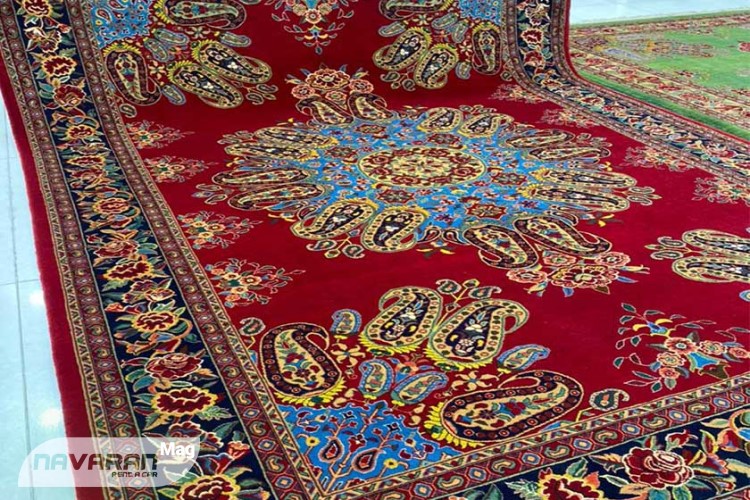
Conclusion
In this article from Navaran magazine, we provided you with all the information you need to know about Persian carpets. As a perfect Iranian art, nowadays, Persian carpet has a major role in the hand-woven carpet industry all over the world. Suppose you are in Tehran and looking forward to buying a Persian carpet as an Iran souvenir from any of the Iranian cities, including Tabriz, Qom, Kashan, and others. In that case, you can easily rent a car from Navaran and travel to those cities. We offer different models of cars in our fleet with easy car rental conditions in Iran.
